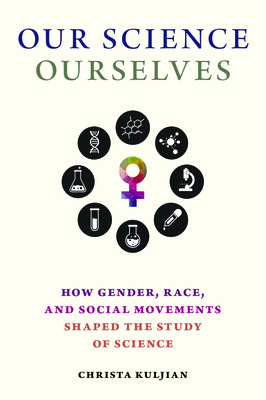
Kuljian, Christa
product information
description
the Harvard College campus as a first-year student in the fall of 1980 with copies of Our Bodies, Ourselves and Ms. magazine, she was concerned that the women's movement had peaked in the previous decade. She soon learned, however, that there was a long way to go in terms of achieving equality for women and that social movements would continue to be a critical force in society. She began researching the history of science and gender biases in science, and how they intersect with race, class, and sexuality. In Our Science, Ourselves, Kuljian tells the origin story of feminist science studies by focusing on the life histories of six key figures--Ruth Hubbard, Rita Arditti, Evelyn Fox Keller, Evelynn Hammonds, Anne Fausto-Sterling, and Banu Subramaniam. These women were part of a trailblazing network of female scientists in the 1970s, 80s, and 90s who were drawn to the Boston area--to Harvard, MIT, and other universities--to study science, to network with other scientists, or to take a job. Inspired by the social and political activism of the women's movement and organizations such as Science for the People, the Genes and Gender Collective, and the Combahee River Collective, they began to write and teach about women in science, gender and science, and sexist and racist bias and exclusion. They would lead the critiques of E. O. Wilson's sociobiology in 1975 and Larry Summers' comments about women in science thirty years later. The book also explores how these contributions differed from those of Nancy Hopkins', author of the 1999 MIT report on women in science, and a "reluctant feminist." Drawing on a rich array of sources that combines published journal articles and books with archival materials and interviews with major luminaries of feminist science studies, Kuljian chronicles and celebrates the contributions that these women have made to our collective scientific knowledge and view of the world.
member goods
No member items were found under this heading.
listens & views

PIANO CTO 25 C MAJ ...
by MOZART / BEETHOVEN / BRAHMS / SCHUMANN / FISCHER
COMPACT DISCout of stock
$52.25
Return Policy
All sales are final
Shipping
No special shipping considerations available.
Shipping fees determined at checkout.






